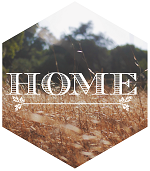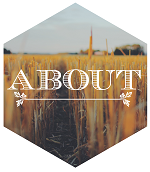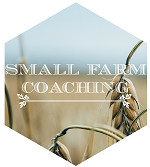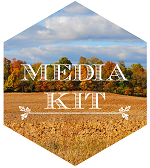Which do you think is better: Livestock of rare and heritage origin, or livestock of nativised genetics? This is a question I ask myself all the time, and I am still trying to decide on an answer.
For example: Let's suppose you're looking for a really hardy breed of cow that will give you 4-5 gallons of milk a day, needs minimal grain, isn't prone to health problems like mastitis or milk fever, and does well in your climate (whether that's really wet like mine, or really dry like down South). How are you going to start looking for said cow? I'll pipe up here and say that my *first* idea would be to look for a heritage breed that fits the bill. I like the idea of preserving gene pools and working with rare breeds; so off I hop to the ALBC (American Livestock Breeds Conservancy) website and look at what they have in the way of heritage dairy cattle breeds. A few breeds that might work would be the Canadienne, the Dutch Belted, the Milking Shorthorn, or perhaps even the Milking Devon (I suppose I had better not forget to mention the Randall Linebacks, which are my favorite breed!!). All these cows are old, old breeds that would fit the bill where hardiness is concerned. But what about climate? What about parasite resistance? The Randall Lineback was created and kept up in the New England states and is noted for it's ability to withstand damp and cold weather. It's a breed not as likely to end up with hoof rot. But what would happen if we put that Randall down in the deep South? How will it acclimate in hot and dry Texas? Or what if we were looking at a breed that came from one of those hot states? How well would it adapt to suddenly dealing with damp winters and lots of mud?
I think everyone can find a heritage breed that suits their needs, but I don't think it's any secret that these rare breeds are pricey. Not everyone can afford to be on a 2-5 year wait list for a $3,000 calf. Or pay $350 to $400 for a 8 week old weaner pig. Or what if we can't find exactly what we're looking for? What if we wanted a hardy breed of dairy goat that did well in a warm climate, but all there is was the San Clemente which is currently a pathetic milker?
Is there some middle road between the expensive heirlooms and the bred-up, delicate hot rod breeds of today, like the Holstein cow, Pietrain pig, or Suffolk sheep?
Personally, I think there is. It's called nativised genetics. Which means you have a carefully crossbred animal who's genetics are specifically adapted to its immediate locality. Problem is, you have to create it yourself. I learned about the beauty of nativised genetics when I went to Joel Salatin's farm. His cattle are his own cross that he's been working on for -- 20 years I think? Don't quote me on that, but I believe it's pretty close to that number. I know he's got some Shorthorn blood in there, and some Brahman, and I believe the third breed was Hereford... In any case, Joel's been breeding these crossbreds so long that they have become a breed of their own, and they are 100% adapted to Joel's farm. Those cows would probably be terrible on my farm here on Oregon. The same thing was done with Daniel Salatin's rabbits. He started with a trio of three different breeds; not because he wanted to, but because that's what was available. Today they are the most beautiful rabbits I've ever seen (and I've got almost 12 years of rabbit experience behind me). They are cookie cutter consistent, large in size, and very, very adapted to hot weather, AND the youngsters do extremely well on grass, whereas most breeds can't have grass until they're mature since they might bloat and die. They've created their own breeds, using what was available, and aggressively culling until they had an animal that they wanted and needed. Good producers, parasite resistant, good foraging ability... It took time to create those breeds, but it was cheaper than buying a rare breed, and now they have an animal that will excel in their locality.
So which is better in the end? Which should we do? Conserve a rare breed and just be extremely careful that we use an animal that is best suited for our area (which is challenging if you live in a damp place like I do that gets a little over 45 inches of rain each year! If you scoot over a couple counties, then you'll be in places that get over 60 inches of rain a year!)? Or do we start responsibly breeding our own livestock that are carefully crossed to create a hardy animal specifically for our needs? I need an animal that will keep foraging even in the rain. I need one that won't get hoof rot from all the dampness, or keel over from pneumonia during an unseasonably damp autumn. I need one that has a high resistance to parasites, since my location struggles with liver fluke worm due to all the dampness. And I still need that animal to pay its way in meat, milk, or fiber. Talk about a tall order.
So which is better? Put myself on that wait list for that expensive Randall Lineback calf that I'm dying to have? It would do incredibly well in my situation, and I'd be helping to conserve an incredibly rare breed; but I'd have to have it hauled from Vermont or Connecticut, and I'd have to be saving my pennies for it! Or do I start crossing local breeds to create what I need? Maybe Jersey for size, a little bit of Angus for feed efficiency and calf size, and perhaps a bit of shorthorn for ruggedness? Actually, I think a Jersey/Murray Gray/Normande cross might be neat for my area. :) That'd be the cheaper route, but it would take a LOT longer!
This isn't exactly a question about what *I* should do. I'm throwing this out as food for thought for us all. I want your opinions on which YOU think is better. Heritage? Or nativised?









3 comments:
Nativised makes sense to me, as that's probably how the heritage breeds started in the first place... You breed and keep what works...
I agree with Nancy. However, my patriotism and craving for anything historically/heritage Canadian would make me want to stick with the Canadienne and just try and make it work. Eventually (I would assume) it would slowly become accustomed to my land and whatever issues could be reduced. So there's a little bit of nativization (new word, shush) I think that would occur anyways. I mean that's how the Canadienne cow and horse were developed - for the most part.
An interesting book you might read is "Renewing America's Food Traditions" edited by Gary Paul Nabhan. It talks about many landraces (animal and plant).
Post a Comment